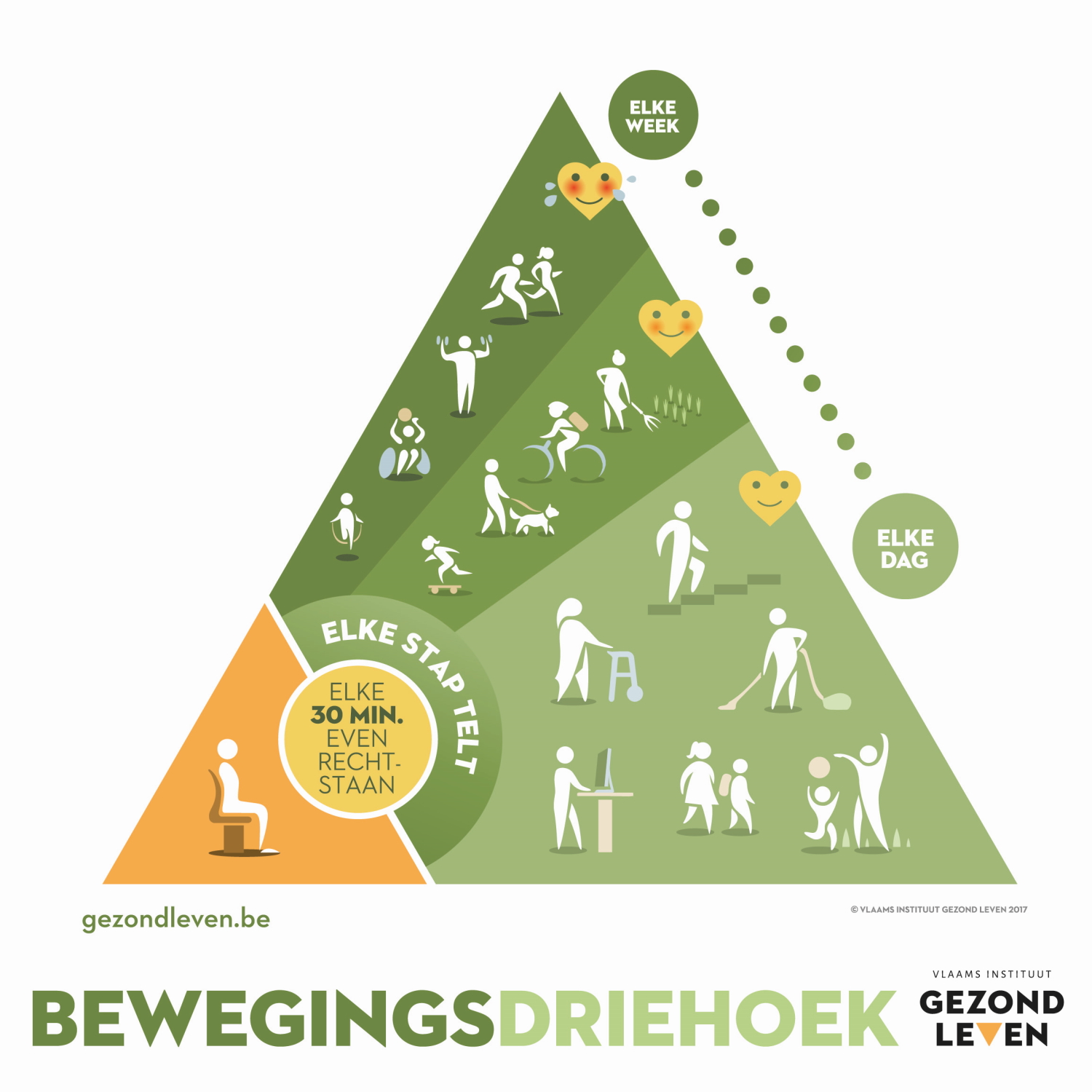The intensity of movement
Sufficient exercise is an indispensable part of a healthy lifestyle. But exercise is not synonymous with sport.

There are exercises with different levels of intensity. Heart rate is a good parameter to estimate the intensity of an effort.
Light intensity
Light intensity activities do not affect the heart rate . These efforts are important, but they are not sufficient to achieve health gains. This requires a greater effort.
Most household tasks have a light intensity such as:
• to cook;
• shopping;
• to wash up;
• make your bed;
• tidy.
Moderate intensity
During moderately intensive exercise , your heart rate and/or breathing will be at least a little faster than normal and you will sweat slightly.
Examples of moderately intensive efforts are:
• walk well;
• mowing;
• dancing;
• aerobics;
• recreational swimming;
• bike;
• canoeing or kayaking;
• table tennis;
• tai chi;
• working in the garden;
• volleyball.
Thirty minutes of moderately intensive exercise is sufficient to achieve important health gains. You can spread the thirty minutes per day over, for example, three times ten minutes or two times fifteen minutes. This makes it easier for you to incorporate exercise into your daily activities.
At least one hour of moderate-intensity exercise per day is recommended for children and young people.
How do you recognize a moderately intensive activity?
- First calculate your maximum pulse rate according to the formula '220 - your age'.
Example: If you are 35 years old, your maximum heart rate is 185 (220 – 35 = 185). - Then measure your pulse during the activity .
During moderately intensive activity, the pulse rate should be between 55% and 69% of the maximum pulse rate.
High intensity
Do you want to improve your fitness? Then increase your tension and choose activities with a higher intensity.
Examples of higher intensity activities include:
- to jog;
- stepping;
- fitness;
- play football;
- basketball;
- handball;
- to climb;
- to skate;
- to ski;
- tennis;
- squash;
- speed walking.
It is important that you move within a heart rate zone tailored to your fitness . Do not exercise with a heart rate that is too high, because then you will not be able to maintain it for long and the risk of overload and injuries increases.
The training level is different for each individual and depends on factors such as age, gender and weight . To train and burn fat as efficiently as possible, you must train within the correct training zone. You obtain this by calculating 70% for the lower limit and 80% for the upper limit of your maximum heart rate.
Using a heart rate monitor during training can help you exercise within the correct heart rate zone. Practicing for at least half an hour three to five times a week is enough to get the optimal effect of your training.
If you are inactive for a long time or suffer from certain health complaints, it is best to contact your doctor before you start exercising intensively.

